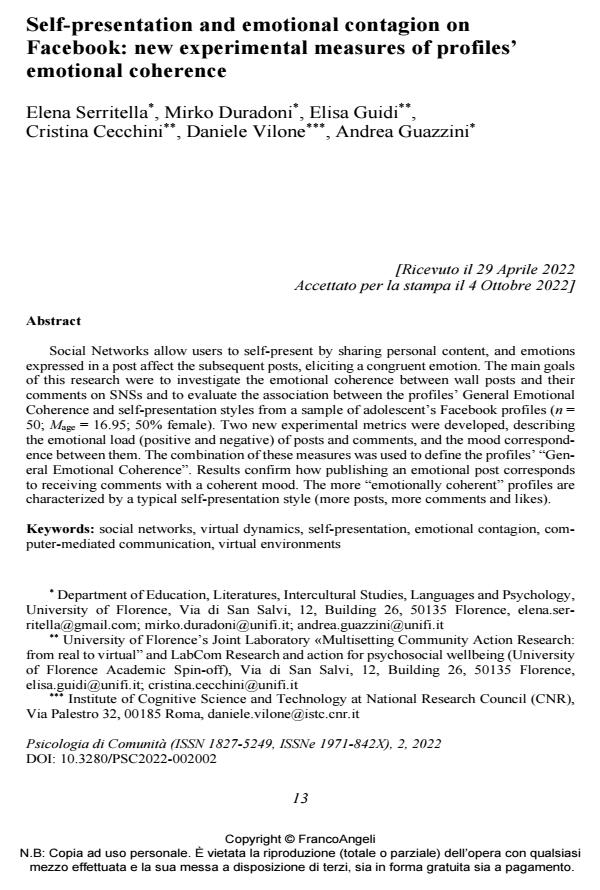Self-presentation and emotional contagion on Facebook: new experimental measures of profiles’ emotional coherence
Journal title PSICOLOGIA DI COMUNITA’
Author/s Elena Serritella, Mirko Duradoni, Elisa Guidi
Publishing Year 2022 Issue 2022/2
Language English Pages 21 P. 13-33 File size 233 KB
DOI 10.3280/PSC2022-002002
DOI is like a bar code for intellectual property: to have more infomation
click here
Below, you can see the article first page
If you want to buy this article in PDF format, you can do it, following the instructions to buy download credits

FrancoAngeli is member of Publishers International Linking Association, Inc (PILA), a not-for-profit association which run the CrossRef service enabling links to and from online scholarly content.
Social Networks allow users to self-present by sharing personal content, and emotions expressed in a post affect the subsequent posts, eliciting a congruent emotion. The main goals of this research were to investigate the emotional coherence between wall posts and their comments on SNSs and to evaluate the association between the profiles’ General Emotional Coherence and self-presentation styles from a sample of adolescent’s Facebook profiles (n = 50; Mage = 16.95; 50% female). Two new experimental metrics were developed, describing the emotional load (positive and negative) of posts and comments, and the mood correspondence between them. The combination of these measures was used to define the profiles’ "General Emotional Coherence". Results confirm how publishing an emotional post corresponds to receiving comments with a coherent mood. The more "emotionally coherent" profiles are characterized by a typical self-presentation style (more posts, more comments and likes).
Keywords: social networks, virtual dynamics, self-presentation, emotional contagion, com-puter-mediated communication, virtual environments
Elena Serritella, Mirko Duradoni, Elisa Guidi, Self-presentation and emotional contagion on Facebook: new experimental measures of profiles’ emotional coherence in "PSICOLOGIA DI COMUNITA’" 2/2022, pp 13-33, DOI: 10.3280/PSC2022-002002